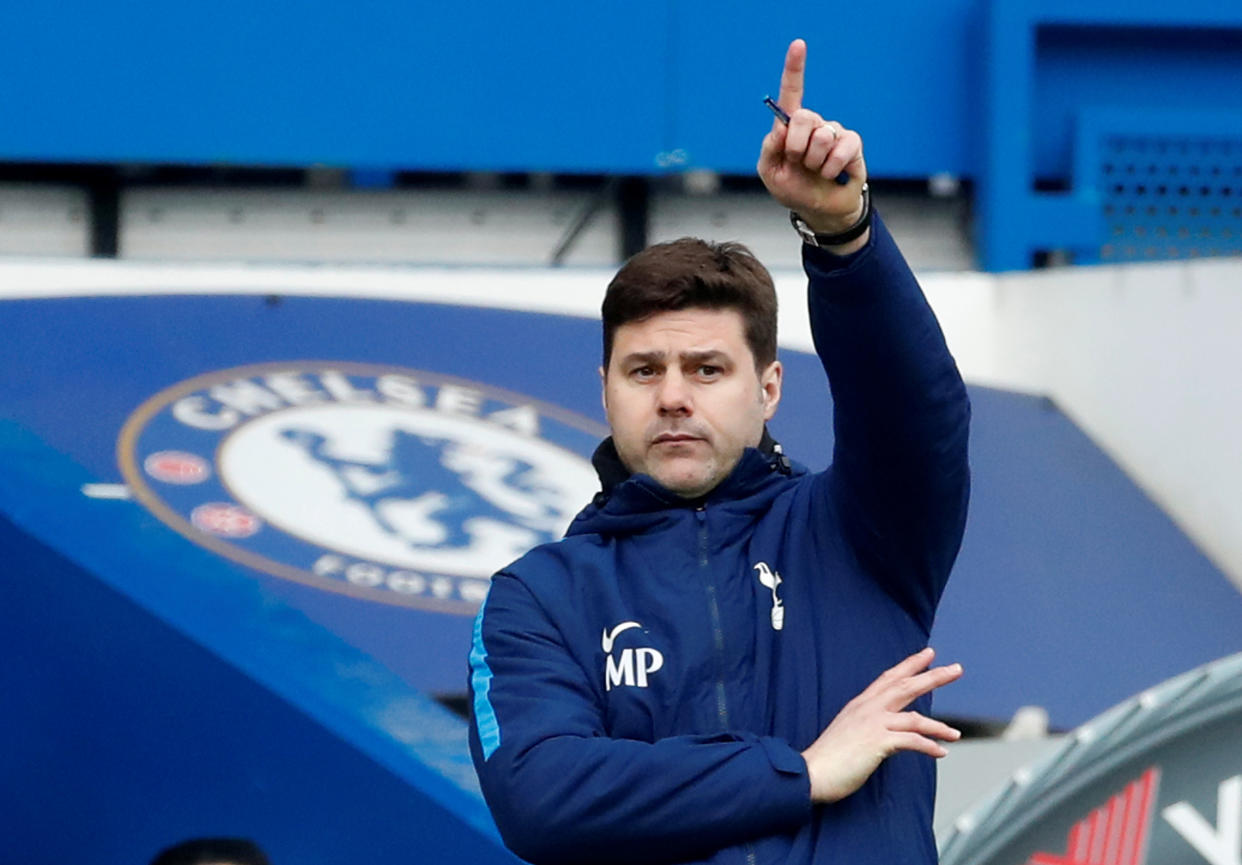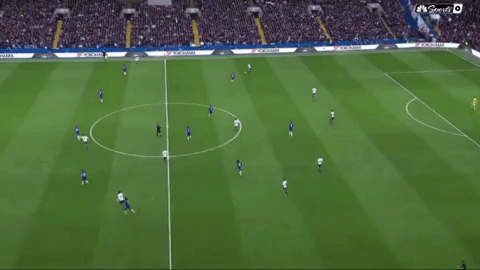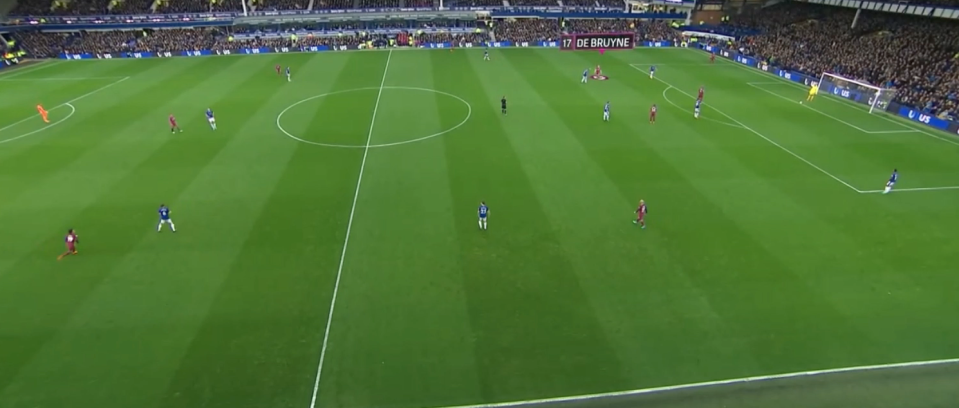2017-18 Premier League DARTS, Week 32: How Tottenham's false 9 tweak undid Chelsea

Welcome to Premier League DARTS, FC Yahoo‘s weekly EPL column that will run every Monday or Tuesday morning. Why “DARTS”? Because Henry Bushnell will recap the weekend’s biggest games with Discussion, Analysis, Reactions, Takeaways and Superlatives. All of that is below. But first, a brief intro …
For the past two seasons, the Premier League has been blessed with managerial talent – not universally, but certainly at the top. The 2015/16 migrations of Jurgen Klopp, Pep Guardiola and Antonio Conte turned England’s Big Six into a constellation of the sport’s top coaches. And they, in turn, have transformed many Big Six showdowns into chess matches.
More than 18 months later, the chess is ongoing. It has at times fizzled out into dull, uneventful stalemates often involving a certain 55-year-old Portuguese grouch. But more often than not, it has made those showdowns as compelling as ever.
And other than Guardiola, the most consistent winner hasn’t been Klopp; it hasn’t been Conte; it hasn’t been Jose Mourinho or Arsene Wenger. It’s been the smallest name of the six, Mauricio Pochettino. And this past Sunday offered up exhibit 1A.
Players still win games, and yet another lively Premier League weekend was no exception. But managers can influence them. Pochettino was the latest to do so with a halftime tweak at Stamford Bridge that might have just settled the top four race. It catalyzed separation between fourth and fifth place. And most important of all, it enabled history.
1. Pochettino’s tweak – but first, the half that necessitated it
Tottenham had not won at Chelsea since the birth of the Premier League, and 45 minutes of Sunday’s critical clash at the Bridge hadn’t foretold of an end to the drought. The Blues had been the better team. They had suppressed Tottenham attack after Tottenham attack at the buildup phase. Whether Alvaro Morata had or hadn’t headed Chelsea in front, and whether Christian Eriksen had or hadn’t pegged the hosts back with a long-range knuckler, Pochettino had problems to sort out.
Up until Sunday, Spurs had survived without Harry Kane during his latest injury absence, but Chelsea was proving to be a tougher nut to crack. The pre-match plan had been to break the lines using a 3-v-2 advantage in midfield, with Eriksen, Dele Alli and Erik Lamela all tucking into the middle third of the field and playing on the blindsides of Chelsea’s holding midfield two, N’Golo Kante and Cesc Fabregas.

Occasionally Eriksen would drop deep to get on the ball, or Lamela would stay wide; in those cases, Son Heung-Min, playing as the lone striker, would slide down to maintain the 3-v-2 advantage.
But the issue Tottenham ran into was the lack of space between the lines. Chelsea’s back three weren’t being stretched vertically, so the 3-v-2 effectively became a 3-v-5 or 4-v-5. Even when Eric Dier or Mousa Dembele found a teammate over either shoulder of Fabregas or Kante, the next stage of the move was combination play among the attacking four. That combination play often broke down due to congestion centrally.

Pochettino went into the dressing room knowing he needed to do one of two things. He either had “to find a bit of space between the lines,” as he’d later tell NBC Sports Network after the match. Or he had to take advantage of Chelsea’s eagerness to extinguish that space.
In the second half, he and his players did both.
2. The halftime tweak, and its influence on goal No. 2
The tweak was a simple one. It was far from the only factor that contributed to Tottenham’s two second-half goals. But the act-counteract chain directly connected Spurs’ first-half struggles to their match-winning moments.
Son and Lamela swapped positions, with the Korean attacker moving wide right to stretch Chelsea vertically and horizontally. Lamela more or less played as a false nine, seeking out space between the lines just as he had before, but from a central position.

As the nominal striker, though, Chelsea’s center backs felt ever so slightly more attracted to Lamela when he checked to the ball. And if you watch Andreas Christensen on the goal, you’ll understand why that mattered:
Christensen, fixated on Lamela, recognized Alli’s run a split-second too late. Caught off guard, he initially turned his hips the wrong way, and by the time he corrected his mistake, he was beaten. The goal, of course, was mostly about the perfection of Dier and Alli. But Christensen’s misstep left the Chelsea defense susceptible to such a straight ball over the top.
3. The halftime tweak, and its influence on goal No. 3
The more directly related reward came minutes later. With Son “getting chalk on his boots,” and Alli and Lamela occupying Caesar Azpilicueta and Christensen, Eriksen saw the right half-space vacant near the halfway line and came across the field to make himself available. Antonio Rudiger, unoccupied, stepped to Eriksen when the Dane received a pass from Dier.

Rudiger and his defensive partners had spent much of the first half squeezing that space between the lines. And in the first half, with Tottenham attackers rarely running in behind, there would have been little risk attached to his decision to close down the ball.
But in the second half, Son reacted to Rudiger’s step like a carnivore smelling blood. Before Dier even released the first pass, Son was off on his sprint. Eriksen swept a first-time through-ball into his path as if the move had been choreographed.
Again, it was in-sync brilliance from the visitors. But it wouldn’t have been possible without the first 45 minutes, which conditioned Rudiger to compress the territory between midfield and defense, incognizant of what might transpire behind him. Pochettino, like great managers do, turned a tricky situation into a triumphant one.
4. Manchester City’s clockwork brilliance
Less than 24 hours before Tottenham’s first win at Stamford Bridge in 28 years, Manchester City provided another example of how both players and managers can conspire to win games – and how other managers who misuse their players can lose them.
Twelve minutes into City’s game at Everton, Leroy Sane had applied his insane talent to smash a volley past Jordan Pickford at one end. At the other, Oumar Niasse had failed to put a header on frame. Had each chance instead materialized at the other end, the score still might have been 1-0 to City. Individual quality affects match outcomes more than anything else.
But from the goal kick immediately following Niasse’s miss, we saw one manager outclass the other as well.
City’s forwards, as Guardiola instructs them to do, pulled Everton’s defense back toward its own goal as far as they could:

The purpose is to create space underneath. The larger the area for the resulting 7-v-7 in front of the defense, the more advantageous it is for the attacking team, and the easier it is to play through, around or over a high press.
Which is why, of course, most teams won’t press City high on goal kicks. Most accept that the risk, given City’s superior talent and preparedness, outweighs the potential reward. Sam Allardyce apparently doesn’t understand these concepts.
Allardyce idiotically drilled his players to match up man for man. In other words, he set them up for embarrassment. Leroy Sane – likely following training ground instructions from Guardiola – checked toward the center circle. Ederson picked him out. Kevin De Bruyne easily outran Wayne Rooney – Defensive Midfielder Wayne Rooney, that is, which might be the most hilarious part of all. Sane schooled Phil Jagielka and fed De Bruyne, who teed up Gabriel Jesus.
Breathtaking. Awe-inspiring. Clinical.
And another example of Guardiola’s genius. Sure, this goal can’t happen without Sane’s skill and De Bruyne’s indefatigable pace. And the goal kick scheme doesn’t work if opponents don’t have to honor Ederson’s ability to put an 80-yard driven ball right on a forward’s foot.
But Guardiola, more than anything, is about maximizing his players’ skill; he’s about putting them in positions where their superiority will matter. He does it better than any other active manager. Pochettino does it too. Jurgen Klopp has done it with Mo Salah, who saved Liverpool again this past weekend.
Soccer is ultimately a players’ game. But the fingerprints of top foreign managers are all over the modern Premier League. Matchday 32 was some of the best evidence yet.
Previous DARTS: Week 1 | 2 | 3 | 4 | 5 | 6 | 7 | 8 | 9 | 10 | 11 | 12 | 13 | 15 | 16 | 18 | 19 | 20 | 22 | 23 | 24 | 26 | 27 | 28 | 29 | 30
– – – – – – –
Henry Bushnell covers global soccer, and occasionally other ball games, for Yahoo Sports. Have a tip? Question? Comment? Email him at henrydbushnell@gmail.com or follow him on Twitter @HenryBushnell.



